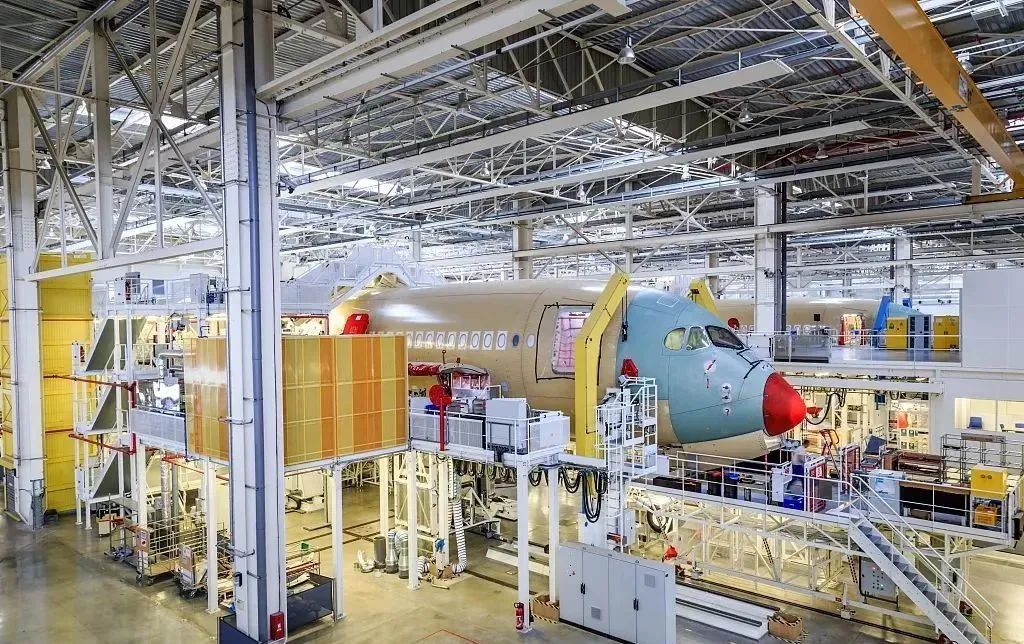Industrial software is the “brain” of modern industrial equipment and a powerful tool for the manufacturing industry to implement the industrial internet and transform into intelligent manufacturing.

Source: China Industrial News
Industrial software refers to software specifically designed for the industrial sector, including systems, applications, middleware, and embedded software. Industrial software is generally divided into two types: embedded software and non-embedded software. Embedded software is used in controllers, communication, and sensing devices for data collection, control, and communication; non-embedded software is installed on general-purpose computers or industrial control computers for design, programming, processes, monitoring, and management. Especially in embedded software, applications in military electronics and industrial control require particularly high reliability, safety, and real-time performance, necessitating strict inspection and evaluation. It is also important to emphasize design-related software, such as AutoCAD and CAE. Industrial software plays a crucial role in product design, complete equipment design, factory design, and industrial system design, significantly enhancing the R&D, manufacturing, and production management levels of industrial enterprises, improving industrial management performance and design efficiency, effectively saving costs, and achieving visual management. It is the “brain” of modern industrial equipment and a powerful tool for the manufacturing industry to implement the industrial internet and transform into intelligent manufacturing. The leading global industrial software companies include Dassault Systèmes, Siemens Digital Industries Software, Autodesk, PTC, Synopsys, Cadence, AVEVA, ANSYS, Altair, Hexagon, ESI, Zuken, Altium, and Aras. Below is an introduction to the eight major software powerhouses in the world:
United States
The United States is one of the leading countries in industrial software globally. In fact, the largest industrial software company in the US is Lockheed Martin. In the 1960s, manual drafting could no longer meet the increasingly complex product demands, prompting aerospace giants like Boeing, Lockheed, and NASA to develop industrial software to replace manual drafting. Computer technology can better express product requirements and eliminate the need for human-driven physical devices.Especially during the Cold War, the US sought to reduce expensive military software costs by promoting military-civilian integration, and Lockheed seized the opportunity to enter the industrial software field. It is worth mentioning that the industrial software developed during this period was primarily for internal use, and many of these software products later transitioned to commercial use for profit. Notable examples still active in the market include CADAM developed by Dassault with Lockheed’s investment; UG developed by McDonnell Douglas; and ANSYS developed by Westinghouse Electric’s Space Nuclear Laboratory.The US places great importance on the development of software and industrial software. For example, NASA, in collaboration with GE and Pratt & Whitney, developed the NPSS software over 20 years, embedding extensive engine design knowledge, methods, and technical parameters, allowing for a complete design cycle of an aircraft engine in just one day. Additionally, the entire development process of the Boeing 787 utilized over 8,000 types of industrial software, of which fewer than 1,000 were commercial software; the remaining 7,000+ were proprietary software accumulated by Boeing over the years, not available for external sale, containing Boeing’s core engineering technology. Industrial software is the foundation of future strategic emerging industries; without industrial software, intelligent manufacturing is merely a fantasy. To this day, nearly every industrial product in the world is a significant result of industrial software.The US was the first country to develop CAE, starting with NASA. With national funding support, NASA developed the famous finite element analysis software Nastran. In 1971, MSC improved the Nastran program, thus becoming the pioneer of simulation software in the US.Most of the top foundational software, such as CAD and CAE, is held by companies in Europe and the US. When it comes to CAD, many people think of Autodesk’s AutoCAD; however, besides Autodesk (USA), Dassault (France), Siemens (Germany), and PTC (USA) are also leading CAD companies, collectively holding over 90% of their domestic CAD market share. Notably, Ansys (USA), Altair (USA), and MSC (USA) essentially monopolize the CAE field.According to data from 2020, the global industrial software market reached $435.8 billion. Particularly, the three giants of EDA software—Cadence (USA), Synopsys (USA), and Mentor (a subsidiary of Siemens)—hold 90% of the global market share, with a staggering 95% share in the Chinese market.
Industrial software is the foundation of future strategic emerging industries; without industrial software, intelligent manufacturing is merely a fantasy. To this day, nearly every industrial product in the world is a significant result of industrial software.The US was the first country to develop CAE, starting with NASA. With national funding support, NASA developed the famous finite element analysis software Nastran. In 1971, MSC improved the Nastran program, thus becoming the pioneer of simulation software in the US.Most of the top foundational software, such as CAD and CAE, is held by companies in Europe and the US. When it comes to CAD, many people think of Autodesk’s AutoCAD; however, besides Autodesk (USA), Dassault (France), Siemens (Germany), and PTC (USA) are also leading CAD companies, collectively holding over 90% of their domestic CAD market share. Notably, Ansys (USA), Altair (USA), and MSC (USA) essentially monopolize the CAE field.According to data from 2020, the global industrial software market reached $435.8 billion. Particularly, the three giants of EDA software—Cadence (USA), Synopsys (USA), and Mentor (a subsidiary of Siemens)—hold 90% of the global market share, with a staggering 95% share in the Chinese market.
Germany
Germany’s software industry is the leader in Europe, both in terms of customer base and producers, and it has consistently maintained its position as one of the world’s largest software suppliers and solution providers. The software industry is a crucial component of Germany’s information and communication technology (ICT) sector. There are approximately 30,000 companies in Germany dedicated to software development and sales, which once accounted for about 46% of the total number of companies in the entire ICT industry.The main characteristic of Germany’s leading software companies is their “youthfulness”; 67% of these companies were established in the 1990s, most emerging from universities, research institutions, and large enterprises. Data indicates that the exports of Germany’s major software companies are primarily to EU countries, while auxiliary software companies focus on exports to North America and Asia.In terms of software development methods, Germany’s major software companies and auxiliary software companies exhibit distinct characteristics. 73% of major software companies engage in the independent development of original software, while 87% of auxiliary software companies procure foundational software and improve it for their own use. Statistics show that two-thirds of the software used by auxiliary software companies is standard software.The German government places great importance on encouraging policies for the IT industry, believing that the development of the IT industry is of strategic significance for national economic and social development. The state of the IT industry determines Germany’s external competitiveness, the sustainability of its economy, and the availability of sufficient employment opportunities in the future. To encourage the development of the IT industry, the German government has introduced a series of policy measures at various levels, including: “Information and Communication Technology 2020 – Research for Innovation” plan, “Innovation and Employment in the 21st Century Information Society” action plan, “Information Society Germany 2006” action plan, “Information Society Germany 2010” action plan, “Everyone Uses the Internet” ten-point plan, “IT for Education: Don’t Cut Off the Internet” action plan, “Multimedia” plan, and “Small and Medium Enterprises Information and Communication Technology Innovation Offensive” encouragement measures.The largest industrial software company in Germany is SAP SE. Although it is just a software company, it leads Germany’s “Industry 4.0” strategy. SAP is the world’s largest provider of enterprise management and collaborative e-commerce solutions and the third-largest independent software vendor globally. SAP is also the largest supplier of business applications, enterprise resource planning (ERP) solutions, and independent software, especially holding over 30% of the global market share for enterprise application software. Notably, over 80% of the Fortune 500 companies use SAP’s management solutions. Since 1988, SAP has been listed on several stock exchanges, including the Frankfurt Stock Exchange and the New York Stock Exchange. Although SAP previously ranked over 400 in the Fortune 500, over 80% of the companies in the Fortune 500 have been its clients. “Industry 4.0” is centered around CPS (Cyber-Physical Systems) and employs three integrations (vertical integration, end-to-end integration, and horizontal integration) as a means to achieve a highly automated, highly digitalized, and highly networked intelligent manufacturing model, thus realizing efficient, agile, and intelligent production, achieving qualitative leaps in efficiency, cost, quality, and personalization.Additionally, FAUSER, established in 1994, is a top global APS (Advanced Planning and Scheduling) software company, with its products positioned in the intelligent planning and scheduling of “Industry 4.0”. FAUSER’s products are widely used by thousands of companies, including Lockheed Martin, BAE Systems, Airbus, BMW, Daimler Chrysler, ThyssenKrupp, and Kohler, becoming the command system for these companies’ “intelligent manufacturing”.Another renowned giant from Germany, Siemens, is also one of the largest industrial software giants globally and a leading automation powerhouse. Siemens manufactured the world’s first 800kV ultra-high voltage direct current transformer, becoming a core device for ultra-high voltage transmission. Siemens provided automation systems and PVSS construction solutions for the world’s largest particle accelerator—the Large Hadron Collider, being the only industrial developer and sponsor of the project.
Although SAP previously ranked over 400 in the Fortune 500, over 80% of the companies in the Fortune 500 have been its clients. “Industry 4.0” is centered around CPS (Cyber-Physical Systems) and employs three integrations (vertical integration, end-to-end integration, and horizontal integration) as a means to achieve a highly automated, highly digitalized, and highly networked intelligent manufacturing model, thus realizing efficient, agile, and intelligent production, achieving qualitative leaps in efficiency, cost, quality, and personalization.Additionally, FAUSER, established in 1994, is a top global APS (Advanced Planning and Scheduling) software company, with its products positioned in the intelligent planning and scheduling of “Industry 4.0”. FAUSER’s products are widely used by thousands of companies, including Lockheed Martin, BAE Systems, Airbus, BMW, Daimler Chrysler, ThyssenKrupp, and Kohler, becoming the command system for these companies’ “intelligent manufacturing”.Another renowned giant from Germany, Siemens, is also one of the largest industrial software giants globally and a leading automation powerhouse. Siemens manufactured the world’s first 800kV ultra-high voltage direct current transformer, becoming a core device for ultra-high voltage transmission. Siemens provided automation systems and PVSS construction solutions for the world’s largest particle accelerator—the Large Hadron Collider, being the only industrial developer and sponsor of the project.
Japan
As the third-largest economy in the world, Japan was once second only to the US in software sales, with outstanding embedded software capabilities. Independent research institutions have ranked Japan’s software quality and productivity far above that of the US. However, Japan’s software products and services still lack a global presence, primarily due to the significant gap between strong software development capabilities and weak product innovation capabilities.Michael Cusumano refers to this contradiction as the “myth of the Japanese software industry.” Most Japanese IT companies are concentrated in industries with low software density. The reason the US software industry outperforms Japan’s is due to the US’s first-mover advantage, driven by its R&D policies and the advanced development of computer science education at the university level, a trend that continues to this day. For instance, one-fifth of software developers in the US have received graduate education, while only one-tenth in Japan have. The gap in doctoral degrees is even larger. However, it is worth noting that the global software outsourcing market has reached $100 billion, with Japan accounting for one-tenth of that.Although Japan does not have a thriving industrial software industry, it has made significant achievements in certain software fields. Japanese companies focus on the development of embedded software, particularly in CNC machine tools, intelligent robots, and automobiles.In fact, almost all devices with digital interfaces in Japan, such as watches, microwaves, mobile phones, digital TVs, and cars, use embedded systems, and the fields involved in embedded software are very broad. This has allowed Japan to dominate the global market in small, high-precision electronic products for decades. However, the distorted industrial software system cannot sustainably support Japan’s manufacturing industry, which is a significant reason for the noticeable decline in Japan’s manufacturing sector in recent years.
France
France is one of the strong countries in industrial software, previously ranking fifth after the US, Japan, Germany, and the UK. As early as February 2012, France released the “Digital France 2020” initiative, which includes three main themes: developing fixed and mobile broadband, promoting digital applications and services, and supporting the development of electronic information companies. In France, the software industry has always been regarded as the “locomotive” of the national economy. Particularly in September 2013, French President Hollande announced the “New Industrial France” strategic plan, aiming to promote employment through industrial innovation and growth over the next decade, enhancing the competitiveness of French enterprises and positioning France at the forefront of global competitiveness. The “New Industrial France” plan includes 34 initiatives covering various fields, including digital technology (including embedded software and systems plans, big data plans, and cloud computing plans), energy, transportation, smart grids, nanotechnology, healthcare, and biotechnology.Most French software companies are small and medium-sized enterprises, with 70% of them having annual revenues below 10 million euros. The internationalization level of the French software industry is not high, with only about 23% of revenues coming from foreign markets, of which 14% comes from the European market. In recent years, France has rapidly become one of the world’s important outsourcing countries, with the outsourcing rate of French software service companies reaching 63% at one point.The globally renowned industrial software giant—Dassault Systèmes from France—was once the world’s largest industrial software provider, with its presence in many globally recognized projects, such as the Bird’s Nest Stadium, Beijing-Xiong’an High-Speed Railway, Daxing Airport, C919 large passenger aircraft, and Coast Guard 160. It also provided comprehensive solutions for the Shanghai World Expo. Dassault Systèmes offers a complete suite of PLM software, providing software system services and technical support for various industries, including aerospace, automotive, and mechanical electronics. Dassault Systèmes was founded in 1981 and is headquartered in Paris, France. It has always been a pioneer in global 3D software. Dassault’s flagship product, CATIA, integrates 2D and 3D functionalities. Its powerful features have made it the leading application for automotive design and a leading application for aerospace design, with Boeing being one of its stable clients. In the 1990s, Dassault established a subsidiary in Japan to further expand its global market.
Dassault’s flagship product, CATIA, integrates 2D and 3D functionalities. Its powerful features have made it the leading application for automotive design and a leading application for aerospace design, with Boeing being one of its stable clients. In the 1990s, Dassault established a subsidiary in Japan to further expand its global market.
Canada
Canada is a traditional software powerhouse globally. It is home to many well-known software companies, such as OpenText, Corel (multimedia office suite software), Houdini (3D animation software), Solido Design (semiconductor design), and various B2B software companies in Fintech. Notably, Canada’s overall development level and strength in foundational software and industrial software rank just behind the US, France, and Germany.In particular, most of Canada’s foundational software and industrial software are globally pioneering. For example, Canada’s outstanding power and oil simulation software CMG suite, CYME, and PSCAD almost monopolize the global software market. Canada also has many leading companies in media office software, semiconductor design, and 3D animation software.
United Kingdom
The UK’s electronics industry once ranked fifth in the world in terms of annual revenue. Electronic companies are mainly distributed in the eastern region of England, Wales, and Scotland, with Scotland being a major production base known as “Silicon Glen.” World-renowned computer manufacturers such as IBM, Compaq, Sun, ICL, and PSION have established factories in the UK, making it the largest computer manufacturing country in Europe.The service industry accounts for 70% of the UK’s GDP, with 70% of that coming from information technology services. The development speed of the UK software industry far exceeds the average economic growth rate. Currently, the information service industry of the UK software sector has surpassed the electronics industry. The UK boasts world-class universities and research institutions, with strong software development capabilities, and many international IT groups have established R&D centers in the UK, such as Computer Associates and Microsoft.Moreover, UK companies place great emphasis on R&D investment. According to the latest statistics from the UK National Statistics Office, the pharmaceutical, aerospace, electronics, and communications sectors rank as the top three in R&D spending among all UK companies. It is worth mentioning that the UK market once accounted for about 20.3% of the entire European IT market and 5.8% of the global IT market. In the UK computer market, computer services hold the largest share, followed by hardware, software, and networks.
Ireland
Ireland was once referred to as the “Celtic Tiger” but has maintained a high growth rate of around 9% in GDP since 1994, peaking at 10.5% in 2000, ranking first among European countries. Particularly, Ireland’s computer software industry has emerged remarkably, achieving impressive global competitiveness in the software field.According to a research report published by the OECD (Organization for Economic Cooperation and Development), Ireland once surpassed the US to become the world’s largest software exporter. Currently, 43% of computers and 60% of supporting software in the European market are produced in Ireland. As a result, Ireland has earned numerous accolades, including “Celtic Tiger,” “Software Capital of Europe,” “New Silicon Valley,” “Software Kingdom,” “Vibrant High-Tech Nation,” and “European High-Tech Center.”  Once known as the “Celtic Tiger,” today it is the “Software Capital”. The rise and development of Ireland’s software industry have roughly gone through three stages: a slow start phase (1970 to 1985), mainly utilizing foreign software products to provide services to users while also producing some products with low profits; a steady development phase (1986 to 1995), where the domestic software industry gradually developed into an emerging industry and began selling to international markets; and a rapid development phase (1996 to present), where software companies began to go public and merge.Ireland is home to the EU headquarters of companies like Motorola, IBM, INTER, and LOTUS, with seven of the world’s top ten software companies having factories in Ireland, some even establishing R&D centers. The software industry has become a pillar of Ireland’s national economic development, with Intel’s Quark chip being designed in Ireland.
Once known as the “Celtic Tiger,” today it is the “Software Capital”. The rise and development of Ireland’s software industry have roughly gone through three stages: a slow start phase (1970 to 1985), mainly utilizing foreign software products to provide services to users while also producing some products with low profits; a steady development phase (1986 to 1995), where the domestic software industry gradually developed into an emerging industry and began selling to international markets; and a rapid development phase (1996 to present), where software companies began to go public and merge.Ireland is home to the EU headquarters of companies like Motorola, IBM, INTER, and LOTUS, with seven of the world’s top ten software companies having factories in Ireland, some even establishing R&D centers. The software industry has become a pillar of Ireland’s national economic development, with Intel’s Quark chip being designed in Ireland.
India
India is renowned as a software powerhouse globally. In the 1960s, “the father of Indian software” C. R. Rao introduced the concept of software to India. A significant proportion of India’s population is illiterate, yet it boasts 410,000 software professionals, a number that continues to grow.Notably, India has 1,832 educational research institutions and polytechnic colleges, training about 70,000 computer software professionals annually. Today, one-third of software engineers in the US are Indian, with 250,000 deeply embedded in Silicon Valley. It is often said that India is driven by the 2% elite at the top of the pyramid, benefiting the 98% of the population. No wonder Bill Gates predicted after his first visit to India that the country has the potential to become a software superpower in the coming years. The successful application of export strategies in the software industry is a crucial aspect of India’s global software industry. India primarily employs two export strategies: the so-called “onshore service,” where Indian software companies send engineers to work at foreign clients’ locations to complete designs; and “offshore service,” where software program development is completed in India and then transmitted to clients for testing and installation. These two business models once accounted for 57% and 35% of India’s software output, respectively. It is worth noting that India primarily provides customized software services, with branded packaged software accounting for a small proportion. Therefore, India’s software industry model is categorized as “software outsourcing.”
The successful application of export strategies in the software industry is a crucial aspect of India’s global software industry. India primarily employs two export strategies: the so-called “onshore service,” where Indian software companies send engineers to work at foreign clients’ locations to complete designs; and “offshore service,” where software program development is completed in India and then transmitted to clients for testing and installation. These two business models once accounted for 57% and 35% of India’s software output, respectively. It is worth noting that India primarily provides customized software services, with branded packaged software accounting for a small proportion. Therefore, India’s software industry model is categorized as “software outsourcing.”
Think Tank Research
Currently, China’s support policies for small and medium-sized enterprises have shown continuity and a gradient characteristic. In the growth process of SMEs, whether in business strategy, marketing model, product R&D, or post-service, they all have unique and valuable experiences.
The China Manufacturing Think Tank, in collaboration with China Education Television and Phoenix Finance, has jointly launched the “Invisible Champion Demonstration Project,” with the “Invisible Champion” program supporting the annual selection of “Invisible Champions Shining 100,” aimed at discovering, showcasing, and recognizing invisible champion enterprises in the manufacturing sector. They have also launched an evaluation system for invisible champion enterprises in China’s manufacturing industry in collaboration with the German Invisible Champion Association and Zhejiang University’s International Research Center for Invisible Champions, guiding specialized and innovative enterprises to continuously build core competitiveness.
✎
THE END
Editor: Yuchen
Source: China Industrial News, copyright belongs to the original author. Unless otherwise stated, all images in the text are sourced from the internet.
“Invisible Champion” Special Links
1: China Manufacturing Think Tank Discovers “Invisible Champion” Series Five: How Specialized and Innovative Enterprises Surpass Germany’s “Invisible Champions”?
2: China Manufacturing Think Tank Discovers “Invisible Champion” Series Four: Ningbo is Undoubtedly the “First City” of Invisible Champions
3: China Manufacturing Think Tank Discovers “Invisible Champion” Series Three: The Phenomenon of Concentration of “Invisible Champions” in Weifang Manufacturing
4: A Huge Question Mark at a Critical Moment: Where Does “Made in China” Come From? Where Is It Going?
5: Cultivating “Invisible Champions” Shifting from Shortboard Strategy to Longboard Strategy
6: The Ministry of Industry and Information Technology will launch the fourth batch of “Little Giants” recognition in May, with a suggestion to prioritize support for specialized and innovative enterprises to list on the main board.
7: Focusing on “Specialized and Innovative”: First Included in the Government Work Report, Expected to Become Increasingly Popular
8: New Hope: Why Should We Firmly Walk the Path of Green Industrialization?
9: New Hope: The Digital Transformation of Manufacturing is an Inevitable Trend
10:New Hope: What Is Happening in Chinese Manufacturing?
11: Guangming Academic Headlines|New Hope: Gradually Shifting from “Shortboard” to “Longboard”
12: Entrepreneur Magazine|New Hope: Specialized and Innovative Redefining Chinese Manufacturing
13: Finance Magazine|China Manufacturing Think Tank and New Hope: Building a Chinese Version of the Industrial “Invisible Champion”
14:Advancing Industrial Chain Modernization with Higher Levels of Openness
15: Invisible Champions Shine 100: Building a “Stage of the Times” for Invisible Champion Enterprises
16: Invisible Champion Demonstration Project: Seeking the “Invisible Champion” Code, Empowering Specialized and Innovative Enterprises
17: New Hope’s Doctoral Thesis Explaining “Specialized and Innovative” in Detail
18:New Hope: The Pandemic Forces Chinese Manufacturing to Innovate and Upgrade
19: People’s Daily|New Hope: Promoting High-Quality Development of Traditional Manufacturing